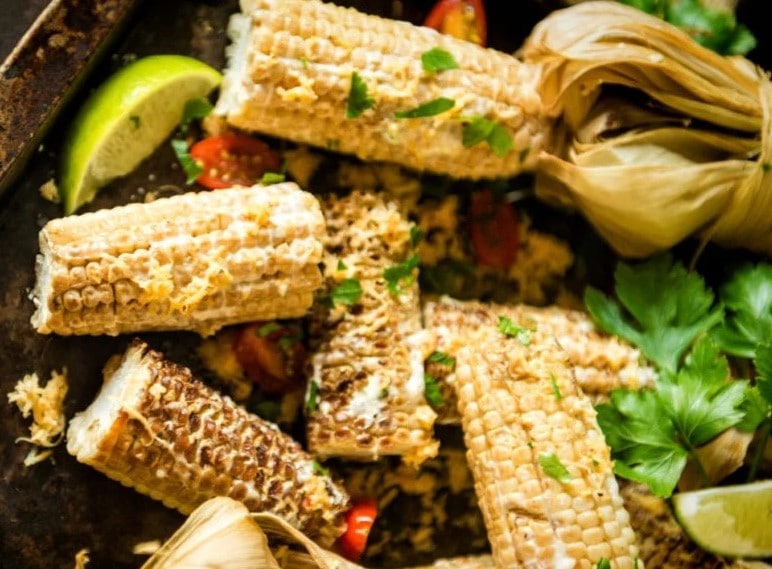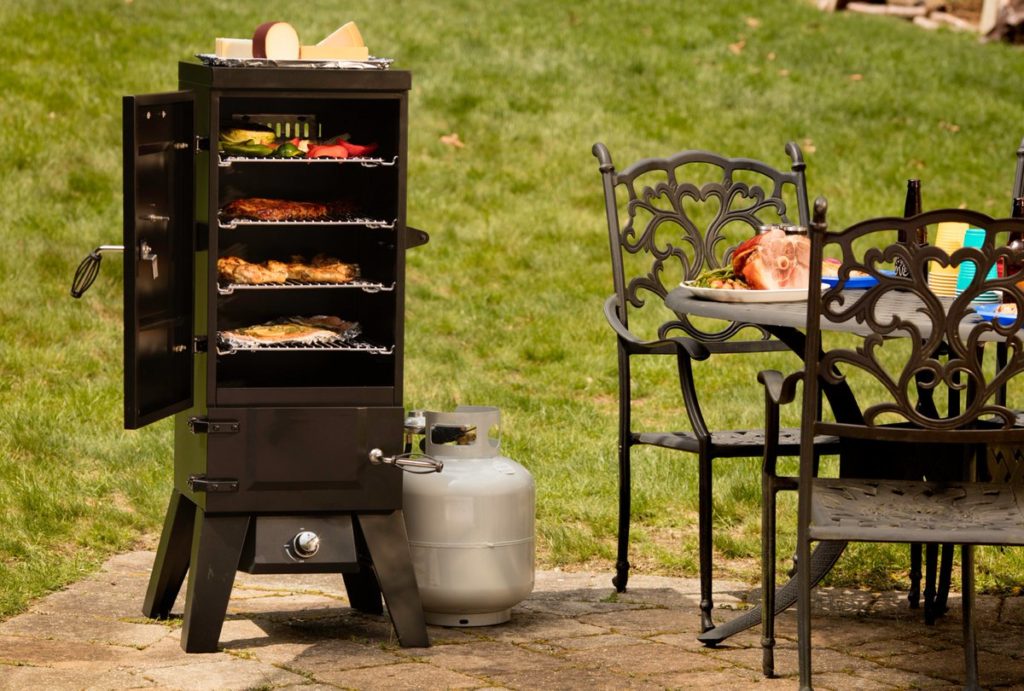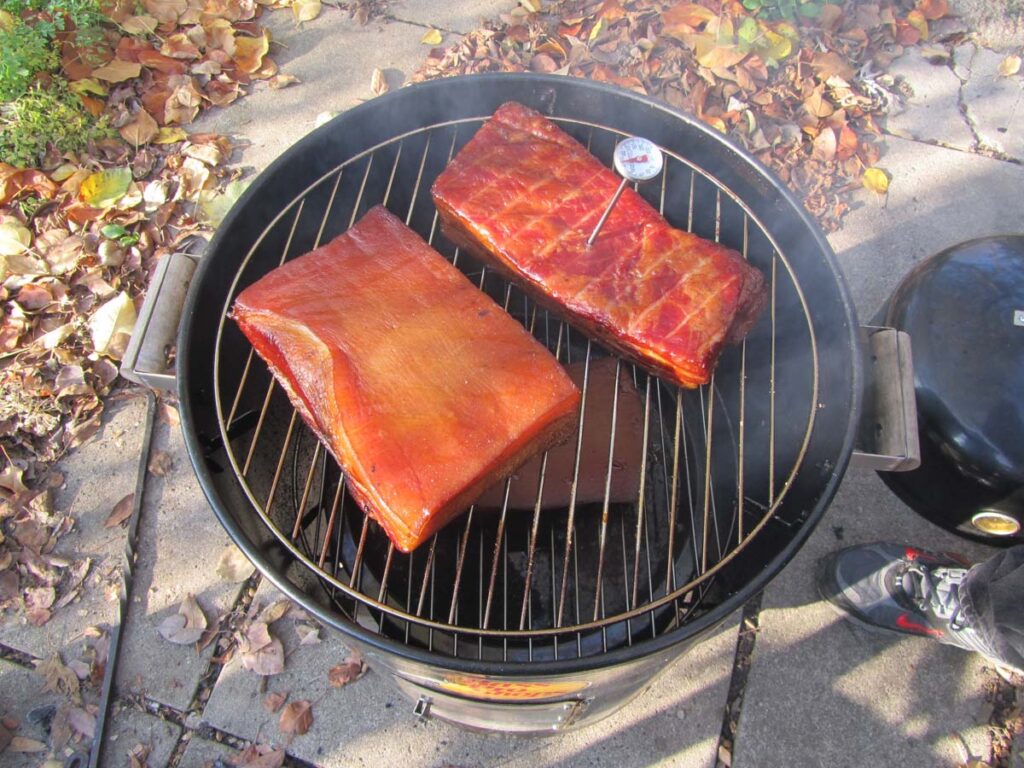

All barbecue enthusiasts and pitmasters live for brisket barbecue with the proper bark formation. The rubs, the fat in the meat, the type of wood, the number of hours, temperature level, the refrigeration period are all factors that influence the quality of your brisket bark. In this article, we’ll see how the bark is formed on the brisket, the fundamental factors influencing the result, how to control these factors to have a lump of well-processed meat. Also, we’ll wrap things up by offering you some of the best brisket rub recipes for a perfect bark.
In everything you do, the brisket rub is the key to a perfect bark. It’s a blend of BBQ spices that you can pair perfectly with pork, fish, chicken, or beef.
Bark forms Trusted Source How To Get Bark When Smoking Meat Bark is formed when you caress perfectly seasoned meat with smoke, water vapor, and just the right amount of heat for hours on end until you are left with mouthwatering meat heaven. The rubs, the type of wood used, and the amount of fat on the meat all factor into the chemical equation that results in bark formation. It is something that all pitmasters and barbecue aficionados live for. The tasty treat that is a sign of expertly prepared, properly barbecued meat. www.napoleon.com on your brisket when the right amount of heat, smoke, and water vapor is rubbed on seasoned brisket for a few hours. Then you are left with a big chunk of mouthwatering meat.
The whole process starts with the brisket rub, which is the mixture of spices applied to the brisket before it is barbecued. This mixture of spices can include soy sauce, brown sugar, salt, ground black pepper, chili powder, and your barbecue seasoning.
The spice, which is the rub, are mixed in a container. The rub is applied to the brisket a day before baking. Then, you have to put the prepared brisket with the rub on, all wrapped in a foil and refrigerated for up to 24 hours.
The right color of a well-prepared brisket is usually dark or licorice color when exposed to smoke. Without smoke, you’ll have a dark red mahogany bark color.
Below are some of the factors which influence the quality of your brisket bark. In summary, these include the rub, the type of wood used in the smoker, the presence of not of fat in the meat, and the spices used.
The rub is the mixture of spice, prepared before the brisket is refrigerated for a day. This rub usually prepared dry, includes salt, paprika, chili powder, onion powder, garlic powder, ground black pepper, brown sugar, parsley, cumin, cayenne, ground mustard, and more. These spices are mixed well, and they are rubbed dry on all parts of the meat.
You can find already prepared rubs on the market if you’re too worried about not getting the final result yourself. According to most reviews by users who have tried it before, the John Henry’s Texas Brisket Rub offers the best taste and result, especially when you’re making a Texas-style brisket bark, which we’re going to show you. Some of the reasons we like it are that the rub doesn’t cake, and it has a salt base already.
The type of wood determines the taste of the brisket. Oak is the most used hardwood for smoking brisket. It is milder I’m flavor, and it’s a good choice when you’re smoking at a temperature of around 250 to 300 degrees Fahrenheit. Charcoal is also a great alternative if what you have is a charcoal smoker.
Especially when you’re dealing with pork, most people like to trim the fat out, and some people want to leave it in. However, the fat determines the final texture of the meat. When you strip the meat of the fat, you end up with a brisket that is dry and hard in texture. So, for a tenderized texture, we’d advise that you leave in the fat and rub in the spices with it. Then refrigerate everything all together. This gives you a great tasting brisket in the end.
Having a good bark on your brisket begins a day before cooking or baking it in a grill or oven. A good bark starts from the ingredients involved, the smoking or baking time and temperature, and the smoking process.
When you think about what a brisket looks like, you know it looks red, dark, and savory. You want your rub to kind of mimic what that brisket is going to look like after you have it all patted down with the sauce.
Get the Ingredients mixed well and ensure no big clumps of anything anywhere like little brown sugar clumps.
When you add celery seed, it will make it bring out a little bit of the barbecue sauce flavor.
Below, we will show you two of the most popular brisket rub recipes you can try for your perfect bark. Check them out!
Ingredients
Items needed
Cook temperature
Instructions
Ingredients
Items needed
Instructions
Note: When you cook, you need to have the fat on top for a while and let that fat drip down into the tray. And then, you will flip it and cook the fat on the bottom. So, you don’t need to worry about trimming the fat off just yet, especially if you’re more worried about carbs than fat.
Note: The unique thing about the Texas style of brisket rub is that you can prepare it to your taste. If you don’t like it to be too salty, bring the salt down. If you want it peppery, bring the pepper up. You can make it suit what you like to eat, and that’s an essential part. If you don’t adjust and tweak all of the recipes, you’re not going to like them. But if you like the general idea, then you can come up with something that you’re going to want to eat.
The rub is the most essential part of making a delicious brisket barbeque with the perfect bark on it.
First, you have to get the spices all over the rub and let it sit in the fridge for up to 24 hours. Then we’re going to put it in the oven or grill the next day. Bake the meat at a low temperature for a few hours so you can have the perfect brisket bark formed on it. Remember, a brisket with the bark on it doesn’t just have to look pleasing to the eye. It must be mouthwatering in flavor. It must be tender and soft, and this depends on how it is processed.
A good bark starts from the right mix and blends of spices, how everything is rubbed on the meat, the time you leave it in the refrigerator, and the temperature and duration at which you bake it in the oven or grill.





